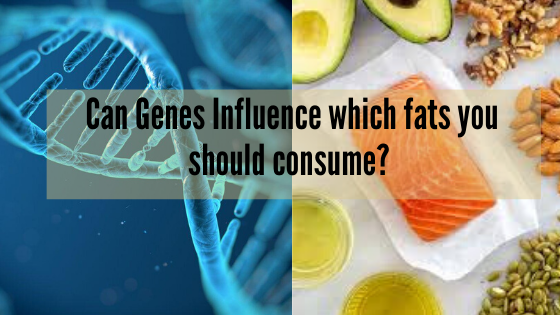When we discuss nutrition, we cannot always rely on terms such as “ good”, “bad”, “ standard” & “quantified nutrition”. Whatever food we consume could be ideal for one person may not go well for others & dietary fat is no different.
In general, fats are organic molecules made up of glycerin & fatty acids. When we eat fat, our digestive system breaks bonds between glycerin & fatty acids. As such both of these are absorbed in the bloodstream separately. Fatty acids are nutritionally more important for fat molecules since they determine chemical differences between fat molecules. Fatty acids are made up of large chain or carbon atoms linked with acidic groups. This is the reason they are called acids. Different fats have different states of matter at room temperature. Oils such as olive oil, soybean oil or nuts oil are liquid at room temperature & become solid when frozen. On the other hand, fats such as butter, margarine, beef fat & check fat are solid at room temperature( high melting points) & melt while cooking.
The difference in melting temperature is driven by how saturated they are. In other words, how many hydrogen atoms they have. The more hydrogen atoms in a fatty acid, the more saturated it is!. Saturated fats are made up of single covalent bonds where each carbon atom is bounded to two hydrogen atoms. These form linear molecules which have capability of coming close to each other & have intermolecular reactions. This is the reason they have a high melting point.
Saturated fats are bad for health, since they build up along the side of blood vessels along with other material & clog them. This is the reason why consuming too much saturated & trans fats can lead to heart stroke depending upon which muscle is clogged. High consumption of these fats results in high HDL levels. Saturated fats are very stable & do not react with other chemicals or lead to oxidation. However some saturated fats are said to improve the good cholesterol- HDL level. For example saturated fatty acids coming from MCT-medium chain triglycerides are better than those coming from long chain fatty acids
On the other hand unsaturated fats are made up of double bonds & made up of carbon chains. The existence of double bonds causes bend in the carbon chain & prevents chains from coming near to each other & reach. Unsaturated fats are highly unstable & are exposed to oxidation at high temperatures. These fats have a low melting point. Unsaturated fats are further broken down into monounsaturated & polyunsaturated fats. Monounsaturated fats have single double bonds while polyunsaturated have multiple double bonds. Polyunsaturated fats have much lower melting point making it more exposed to oxidation as compared to monounsaturated fats. Unsaturated fats are rich in omega-3 & omega-6 fatty acids which are essential for our health & reduces inflammation. Since our body cannot synthesize them, we need to take them from the food we eat.
These are generally explanations of fat which clearly reflects that saturated fats are not considered healthy. But the question is unhealthy for whom? Compared to what? This is where the genomics comes into picture. Instead you should be able to ask questions such as what fat should I include in my diet to which my body will respond well? What should be sources & quantities? Yes, it is true that saturated fats are unhealthy & can increase your LDL level which will further increase risk of cardiovascular disease. However correlation does not mean causation. For instance, some folks who follow a keto diet with increased saturated fat consumption may experience improved lipid levels even after switching from a whole food diet. Everything is relative to an individual.
It is true that genes do not determine what is healthy & what is not with 100% certainty however it does help in determining what our body does well with & what it does not do as effectively. Single nucleotide polymorphism, or SNP, in the DNA of a gene can alter how that gene functions. The way your body reacts to specific types of fat can be affected by particular SNPs in certain genes, including these :
- The obesity gene: The fat mass & obesity associated gene is called FTO, a major genetic risk factor for obesity. Generally speaking this means that a diet with high saturated fat & low unsaturated fat can increase risk of heart diseases. However, folks with certain variations in FTO genes should avoid this dietary pattern even if does not necessarily require cutting saturated fats intake.
- Peroxisome proliferator-activated receptor gamma, or PPARG, is a master regulator of fat and sugar metabolism. The genes activated by PPARG cause higher rates of lipid uptake and more insulin-sensitivity. In people with certain SNPs related to this gene, a diet low in polyunsaturated and monounsaturated fat and high in saturated fat dramatically increases the risks of Type 2 diabetes and obesity. People with variations in this gene should keep these risks in mind.
- Peroxisome proliferator-activated receptor alpha (PPARA) regulates amino acid, fat, and carb metabolism. It’s activated by polyunsaturated fatty acids and plays an essential role in ketogenesis. Some SNPs can make a diet high in saturated fats and lower in polyunsaturated fats a substantial risk factor for Type 2 diabetes and even nonfatal heart attacks. For people with this genetic variance, following a ketogenic diet warrants extra nutritional savvy regarding which fats are consumed.
- Factor for Omega-3 Essential Fatty Acid Conversion(FADS2) is a gene responsible for converting alpha-linolenic acid into the essential fatty acid EPA. This may be important for vegans and vegetarians, as they rely on plant sources for their omega-3s instead of animal sources. A certain SNP in this gene can help you determine your recommended omega-3 consumption and from what sources.
